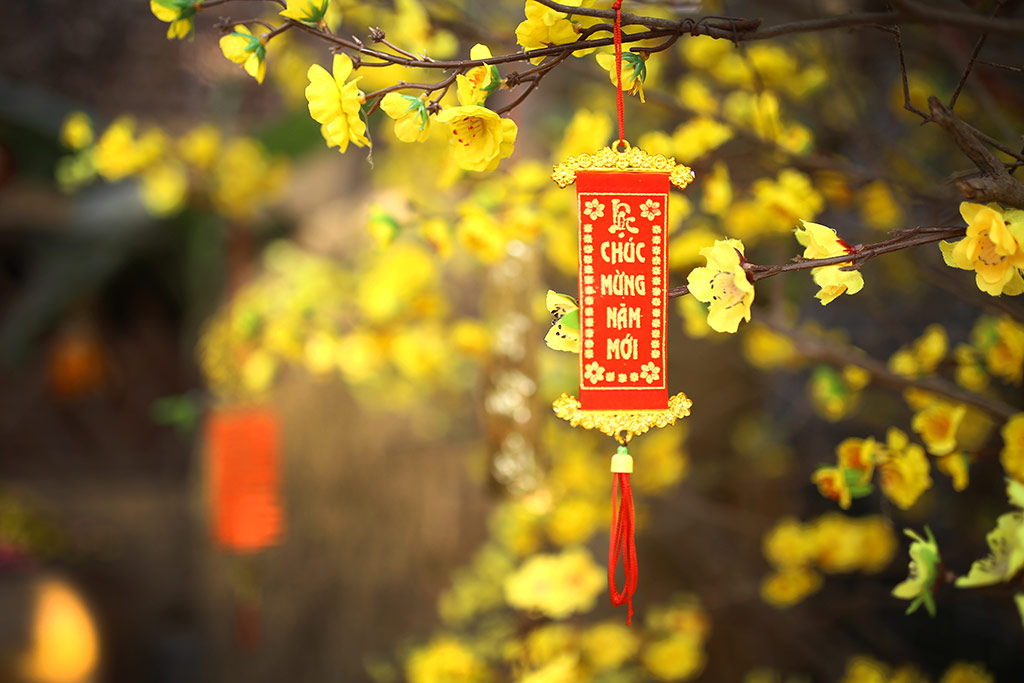Tet in Vietnam: The Lunar New Year Celebration
Tet, or the Vietnamese Lunar New Year, is the most significant and widely celebrated holiday in Vietnam. It marks the arrival of spring, and the beginning of a new lunar year, usually in late January or early February. Often compared to Chinese New Year, Tet is a time for family reunions, honoring ancestors, and celebrating new beginnings. In this guide, we’ll explore what Tet is in Vietnam, its traditions, and how you can join in the celebrations.
1. What is Tet in Vietnam?
Tet, short for Tết Nguyên Đán, means “Feast of the First Morning of the First Day.” It is Vietnam’s version of the Lunar New Year and shares similarities with the Chinese New Year, but with unique Vietnamese customs. Celebrated by millions across the country, Tet marks the end of the lunar calendar year and is a time for families to gather, remember their ancestors, and welcome good luck for the coming year.
Tet is rooted in Vietnamese culture and history, with many of the traditions reflecting both ancient Vietnamese beliefs and influences from Confucianism and Buddhism. For Vietnamese people, Tet is not just a time to celebrate the new year but also a chance to reflect, express gratitude, and seek prosperity for the future.
2. History of Tet
The Vietnamese New Year celebration has been observed for thousands of years, dating back to when the lunar calendar was first adopted in Vietnam. Over time, Tet holiday in Vietnam has evolved from a simple lunar new year feast into a nationwide celebration that includes days of festivities, rituals, and customs.
The significance of Tet stems from its connection to the agricultural roots of Vietnam, where the new year also symbolized the end of a harvest and the start of a new growing season. During Tet, people believed that by performing certain rituals and following traditions, they could secure a prosperous year ahead.
3. When is Tet Celebrated?
The exact date of Tet varies from year to year, as it follows the lunar calendar. It usually falls between late January and mid-February. The celebrations typically last for seven days, though some may extend up to two weeks. Lunar New Year in Vietnam begins on the eve of the new moon and lasts until the full moon appears.
4. How is Tet Celebrated in Vietnam?
Tet is a blend of family traditions, religious rituals, and national celebrations. From cleaning the house to visiting temples, each part of Tet has its own meaning and purpose.
a. Cleaning and Decorating the Home
Before Tet, Vietnamese families clean their homes thoroughly. This act symbolizes the removal of bad luck from the previous year, making way for good fortune in the new year. Homes are then decorated with peach blossoms in the north and apricot flowers in the south, both believed to bring good luck.
b. Preparing Traditional Tet Foods
One of the most important parts of Tet celebrations in Vietnam is the preparation of traditional foods. Families prepare Banh Chung (square sticky rice cake) in the north and Banh Tet (cylindrical sticky rice cake) in the south. These cakes, made from glutinous rice, mung beans, and pork, are wrapped in green leaves and represent the earth and sky.
Other traditional Tet dishes include pickled onions, boiled chicken, and various fruits arranged on a platter. The food served during Tet is meant to bring prosperity and good fortune for the coming year.
c. Paying Respects to Ancestors
Tet is a time to honor ancestors and show gratitude for their protection. Many families set up an altar to display offerings of food, flowers, and incense to welcome their ancestors back into their homes. Visiting the graves of ancestors is also a common practice during Tet.
d. Giving and Receiving Li Xi (Lucky Money)
One of the most beloved traditions of Tet is the giving of Li Xi (red envelopes containing money). Elders give these red envelopes to children and unmarried adults as a symbol of good luck and prosperity. The amount of money is usually small, as it is the gesture and the wish for success that matter more than the value.
e. Visiting Temples and Pagodas
During Tet, many Vietnamese people visit temples and pagodas to pray for good luck, health, and happiness. Offering incense and making donations to the temple are common practices, as this is believed to bring blessings in the new year.
f. Fireworks and Parades
In cities like Hanoi and Ho Chi Minh City, Tet celebrations often include spectacular firework displays and parades featuring dragon and lion dances. These performances symbolize strength and good fortune, warding off evil spirits and ensuring a prosperous year ahead.
5. Tet and the Vietnamese Zodiac
Tet also marks the transition between zodiac animals. Vietnam follows a 12-animal zodiac cycle similar to China, where each year is represented by an animal, such as the Rat, Ox, or Tiger. The zodiac animal for the new year is believed to influence the fortunes of those born in that year, and each zodiac sign comes with its own personality traits and characteristics.
6. How to Experience Tet in Vietnam as a Visitor
If you’re visiting Vietnam during Tet, it’s essential to know that many businesses close for the holiday, as locals spend time with family. However, you can still experience the vibrant atmosphere by visiting local markets, joining public celebrations, or even staying with a Vietnamese family if you have local connections.
Popular tourist spots may also offer special events for visitors, including traditional Tet performances and festivals. Be sure to try some traditional Tet foods, visit a temple, and join in the joyful spirit that defines Tet in Vietnam.
Conclusion: Tet – A Celebration of Culture and New Beginnings
Tet is more than just a new year celebration; it’s a time of renewal, family, and tradition in Vietnam. Whether you’re enjoying the sights and sounds of a Tet festival in Vietnam or sampling traditional foods like Banh Chung, the holiday offers a unique glimpse into the heart of Vietnamese culture. By understanding the history and meaning behind the Vietnamese New Year, you can appreciate this special occasion and embrace the joy it brings to millions of people each year.
















